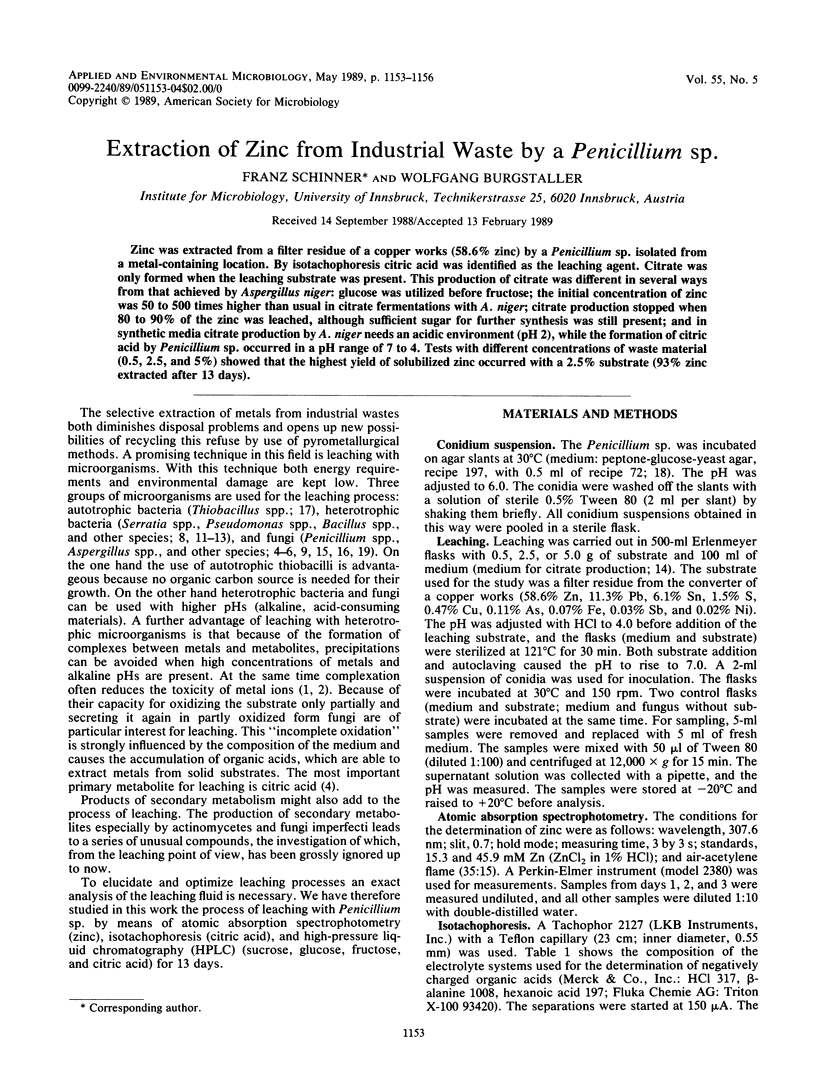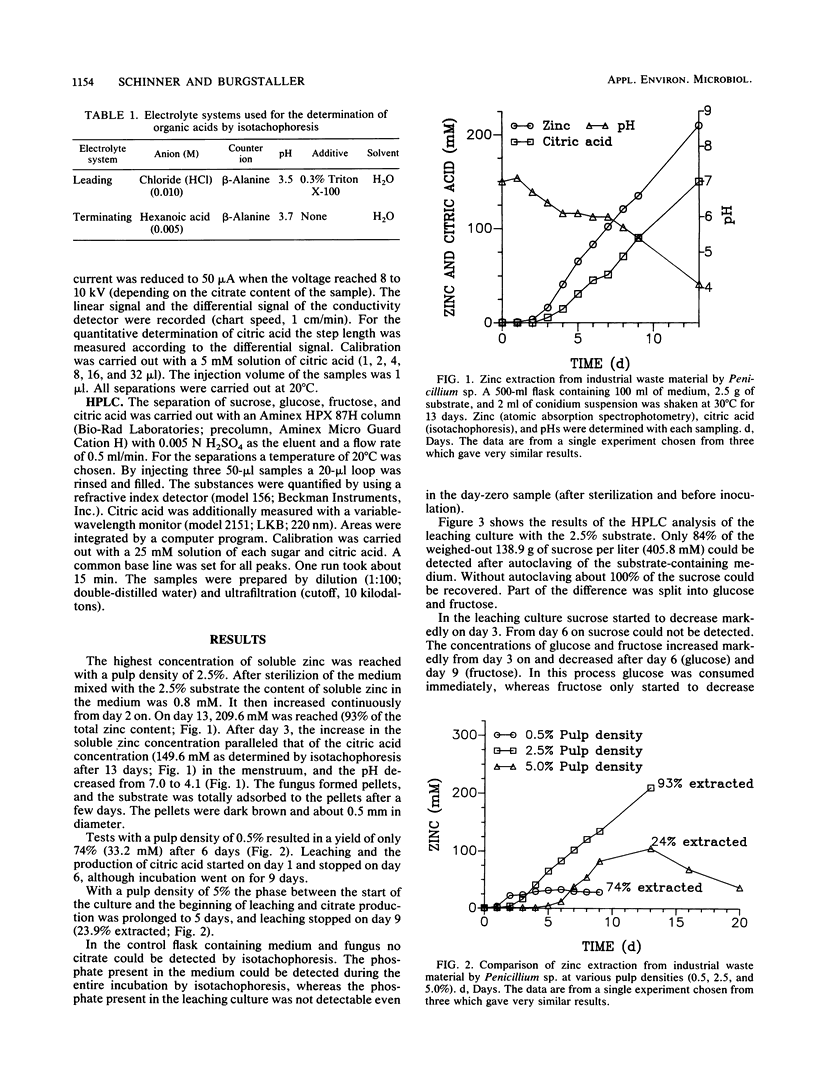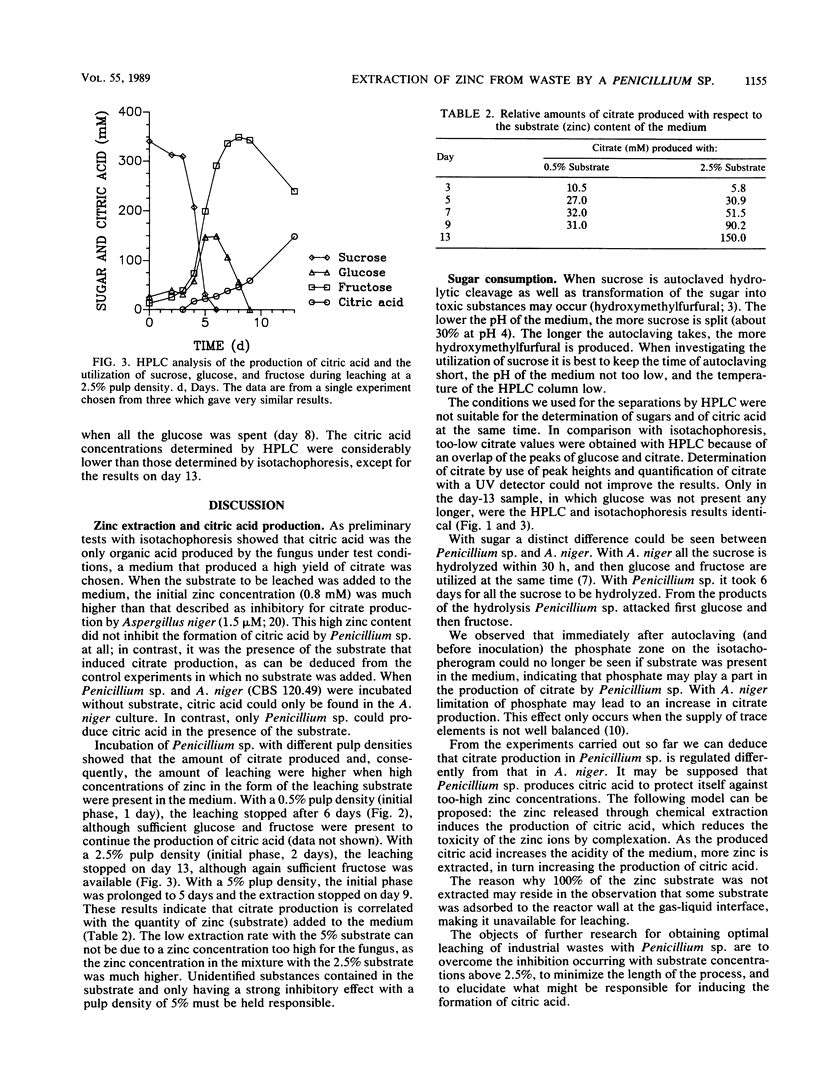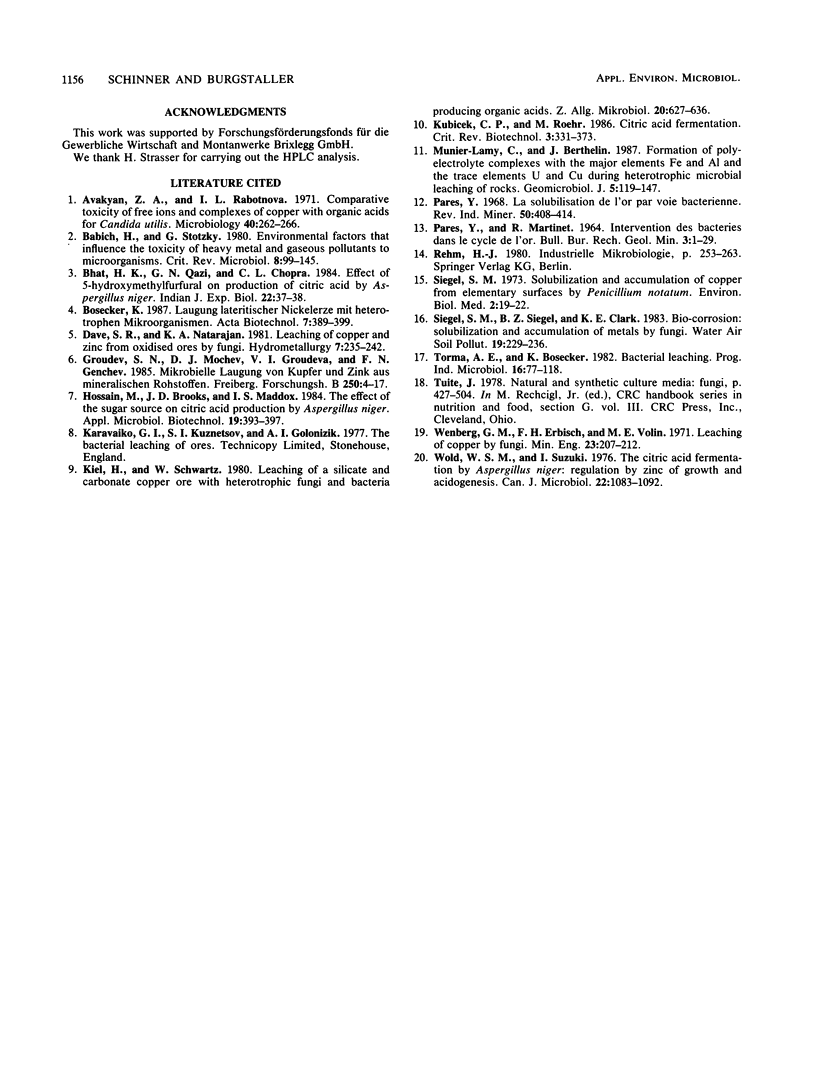Abstract
Zinc was extracted from a filter residue of a copper works (58.6% zinc) by a Penicillium sp. isolated from a metal-containing location. By isotachophoresis citric acid was identified as the leaching agent. Citrate was only formed when the leaching substrate was present. This production of citrate was different in several ways from that achieved by Aspergillus niger: glucose was utilized before fructose; the initial concentration of zinc was 50 to 500 times higher than usual in citrate fermentations with A. niger; citrate production stopped when 80 to 90% of the zinc was leached, although sufficient sugar for further synthesis was still present; and in synthetic media citrate production by A. niger needs an acidic environment (pH 2), while the formation of citric acid by Penicillium sp. occurred in a pH range of 7 to 4. Tests with different concentrations of waste material (0.5, 2.5, and 5%) showed that the highest yield of solubilized zinc occurred with a 2.5% substrate (93% zinc extracted after 13 days).
Full text
PDF



Selected References
These references are in PubMed. This may not be the complete list of references from this article.
- Babich H., Stotzky G. Environmental factors that influence the toxicity of heavy metal and gaseous pollutants to microorganisms. Crit Rev Microbiol. 1980;8(2):99–145. doi: 10.3109/10408418009081123. [DOI] [PubMed] [Google Scholar]
- Kiel H., Schwartz W. Leaching of a silicate and carbonate copper ore with heterotrophic fungi and bacteria, producing organic acids. Z Allg Mikrobiol. 1980;20(10):627–636. doi: 10.1002/jobm.3630201005. [DOI] [PubMed] [Google Scholar]
- Siegel S. M. Solubilization and accumulation of copper from elementary surfaces by penicillium notatum. Environ Biol Med. 1973;2(1):19–22. [PubMed] [Google Scholar]
- Wold W. S., Suzuki I. The citric acid fermentation by Aspergillus niger: regulation by zinc of growth and acidogenesis. Can J Microbiol. 1976 Aug;22(8):1083–1092. doi: 10.1139/m76-159. [DOI] [PubMed] [Google Scholar]


